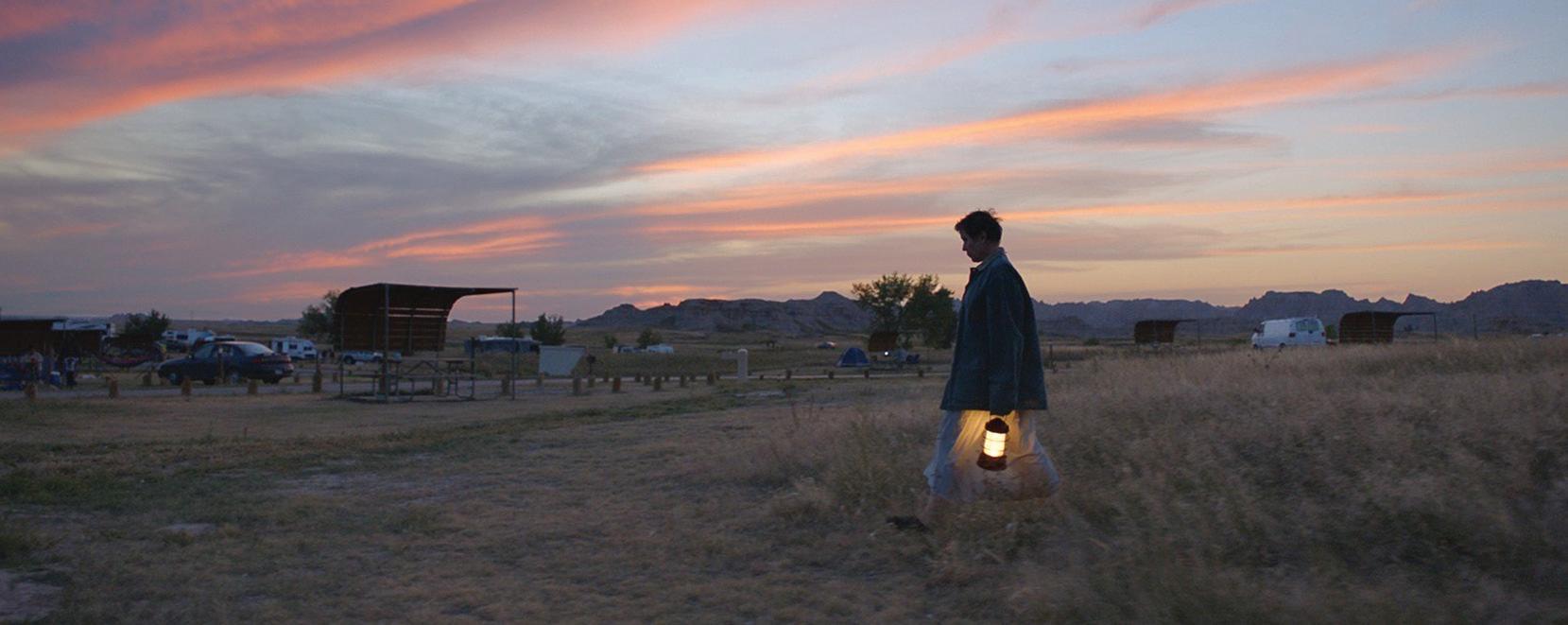
4 minute read
Home Cinema Leonard Heldreth
After a woman loses everything, she hits the road in search of seasonal work in the 2020 film “Nomadland.” Frances McDormand, playing the central character, Fern, won best actress, Chloe Zhao won best director and the film won best picture in the 2020 Academy Awards. (Searchlight Pictures photo)
Films look at American experiences, now and back then
Advertisement
Reviews by Leonard Heldreth
Two films and two video series are offered this month. NOMADLAND
Based on Jessica Bruder’s book Nomadland: Surviving America better for such emergencies, but then confesses she has terminal cancer. With in the Twenty-First Century, the award-winning film Nomadland follows the adventures of Fern (Frances McDormand) as she copes with the loss of her husband, her job, and the town where she lived for years. When the U.S. Gypsum plant in Empire, Nev., closes in 2011, the town ceases to exist–even its ZIP code disappears.
Fern decides to sell or store her belongings and sets out on the road looking for seasonal work, which she first finds at an Amazon warehouse. Don’t expect Nomadland to follow a conventionally scripted narrative–like Fern it wanders about, backtracks, visits the same areas more than once, and eventually passes back through the deserted town of Empire.
Along the way Fern meets a number of interesting people, several of whom play themselves. There’s Linda May (playing a fictionalized version of herself), who encourages Fern to visit a site in Arizona where Bob Wells (playing himself) provides a support location and teaches survival skills to people living on the road–those who are “houseless” as opposed to “homeless.” When Fern has a flat tire, she asks for help from a nearby camper named Swankie (again, an actual nomad). Swankie tells her she has to plan only a few months to live, Swankie wants to see as much of the world and to have as good a time as possible until the end. The actor David Strathairn plays a character named David in a supporting role. When David visits his family, they invite him to move into the guest house for the winter, and he invites Fern to move in also, but during the night she slips away and drives off. When her van breaks down and she has to borrow money from her sister, the sister also invites her to stay, but Fern declines–apparently the desire to be on her own is not a recent development with Fern, as conversations with her sister imply. Fern takes jobs as a camp host at the Cedar Pass Campground in Badlands National Park, at Wall Drug in South Dakota, and at a sugar beet processing plant. When she returns to the Wells site in Arizona, she finds out that Swankie has died, and she joins in a memorial ceremony where they all throw rocks into a fire. She and David share memories of their families. David tells her that nomads don’t say “Goodbye” when they leave; they say “See ya down the road.”
In the last scene Fern returns to the town of Empire to pick up the items she left there in storage and revisits the house where she used to live. The doors are unlocked and open, and Fern goes through the back door, climbs over the fence that separates the yard from the mountains, and strikes off across the desert like one of the tumbleweeds that go blowing by.
Nomadland was nominated for six Academy Awards and won three–Best Picture, Best Director (Chloé Zhao), and best actress (Frances McDormand–her third Oscar as best actress). It also won the Golden Lion at the Venice Film Festival and various other international awards.
ONE NIGHT IN MIAMI
Based on a 2013 stage play of the same name by Kemp Powers, One Night in Miami is a fictionalized account of the 1964 meeting of Malcolm X, Muhammad Ali, Jim Brown, and Sam Cooke in a room at the Hampton House. They are celebrating Ali’s surprise title win over Sonny Liston and pondering what comes next in the lives of these four famous Black men.
The film is a look behind the scenes at the affection and conflict between these four friends and at the pressures on Black men to create an identity that advances racial causes while yet enabling them to be honest with themselves and to enjoy life. As Ossie Davis sums it up in Purlie Victorious, “Being Black can be a lot of fun when ain’t nobody lookin’.”
The film opens with short vignette that sets the stage for each man in 1963. Cassius Clay (Eli Goree) concludes a bout with Henry Cooper at London’s Wembley Stadium and nearly loses. Sam Cooke (Leslie Odom Jr.) is challenged by the cold reception he receives from an all-white audience at New York’s Copacabana. Jim Brown (Aldis Hodge) stops in Georgia to visit Mr. Carlton (Beau Bridges), an old family friend who is white, and is reminded by him that black people (Carlton uses the “N” word) aren’t allowed in the main house. Malcolm X (Kingsley Ben-Adir) returns home to discuss with his wife Betty his plan of leaving the Nation of Islam.
The scene then shifts to Miami for Clay’s title fight with Sonny Liston on February 25, 1964. Brown is a ringside commentator, Cooke and X are guests of Clay. After Clay’s win, X invites the other three to a celebration party at his hotel room, but what he really wants is to discuss how these four famous men can use their fame to advance Black causes in ways that he sees as appropriate. The four have different plans for the future, both individually and for the Black power movement. X










